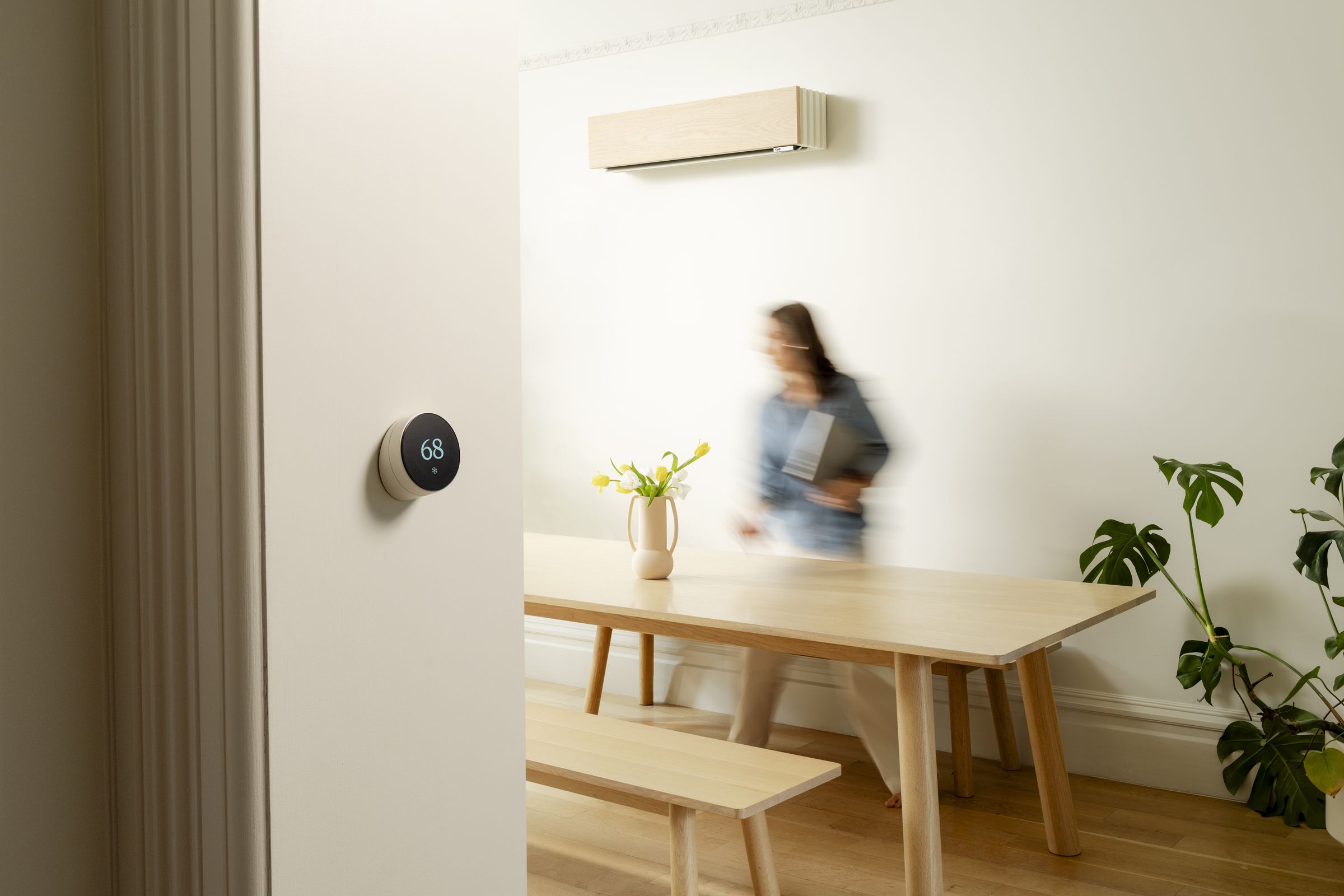Created by former Googlers, Quilt is a smart mini-split system capable of room-by-room heating and cooling that marries energy efficiency with interior design.

A new company founded by three former Googlers is looking to disrupt the somewhat staid mini-split industry. Quilt is a new “home climate system” — a ductless HVAC system that uses heat pump-powered mini-split units to heat and cool your home.
Two things make Quilt stand out from the start: it’s smart and pretty. The system has built-in millimeter-wave radar sensors for precision occupancy detection, so you can choose to heat and cool only occupied rooms. They work with a smartphone app and a stylish touchscreen remote called the Dial, and the system uses predictive algorithms to heat and cool your home as efficiently as possible.
Each Quilt unit is a ductless mini-split, but rather than large white boxes on your wall, Quilt has designed smaller, sleeker units with the option of a white oak or white front panel that can be customized to fit your home decor.
At only 38 inches wide, less than eight inches tall, and just over eight inches deep, the Quilt indoor unit is much smaller than traditional mini-splits and can fit above a window to be less obtrusive in a room. The units also have built-in accent lighting, with color-changing lighting and adjustable brightness.
The outdoor unit, which can power up to two indoor units, has been designed to be smaller and more modern-looking, with a matte black finish. CEO and co-founder Paul Lambert claims the electric units meet or exceed industry standards for energy efficiency, including Energy Star Most Efficient 2024, SEER2 25, and CEE Tier 2. Although figures are preliminary as the system is still pending certification (you can see more details on Quilt’s website). Lambert, along with co-founders Bill Kee and Matthew Knoll,were involved with developing Gmail, Google Analytics, and robotics at Google, respectively. Lambert says Nest co-founder Matt Rogers was an early investor in Quilt.
The Quilt system uses Wi-Fi (2.4 and 5 GHz) and Bluetooth to communicate between units and the remotes, and each Dial can also control the whole system, just like a thermostat does for a central HVAC system. The Dial has temperature, motion, and proximity detection built-in. You can also use the Quilt app (iOS or Android), where you can set schedules and program the system to your preferences — such as what temperatures you want empty rooms to be kept at.
Lambert says the Dials have Thread radios on board and are Matter upgradable, although the company is not enabling either at launch. There is also no integration with smart home platforms such as Apple Home, Google Home, or Amazon Alexa yet. “We want to see where the demand is,” says Lambert. “But we expect to have a public API and support Matter.”

Unlike traditional ducted HVAC systems, ductless systems need one unit for every room (or two, depending on size). While this is more efficient — because they don’t have ducts to carry the heated or cooled air around your home, where it can lose up to 30 percent efficiency — it can be an installation challenge and is a lot more expensive.
Quilt costs $6,499 per room, which includes installation. While there are several rebates and incentives for upgrading your home’s HVAC system to an efficient electrical solution, that’s going to add up very quickly. For a three-bedroom house, say you were looking at installing it in six rooms (each bedroom, a kitchen, living room, and dining room — Quilt doesn’t recommend them in bathrooms) — it could cost close to $40,000. Quilt says it will offer all available rebates and help with incentives at checkout.
Somewhat uniquely, Quilt plans to own the whole process from the point of sale to installation. The system will only be available in the Bay Area at launch, with the first installations slated for late summer 2024. Los Angeles will follow later this year, and Lambert says they plan to expand based on reservation volume. So, if you’re interested, you should sign up on Quilt.com — a $100 deposit is required.
